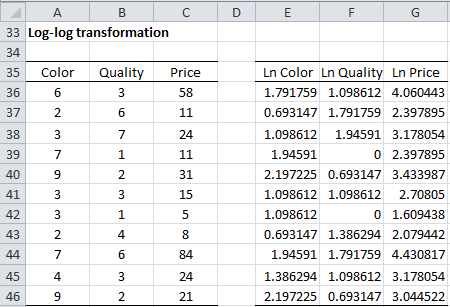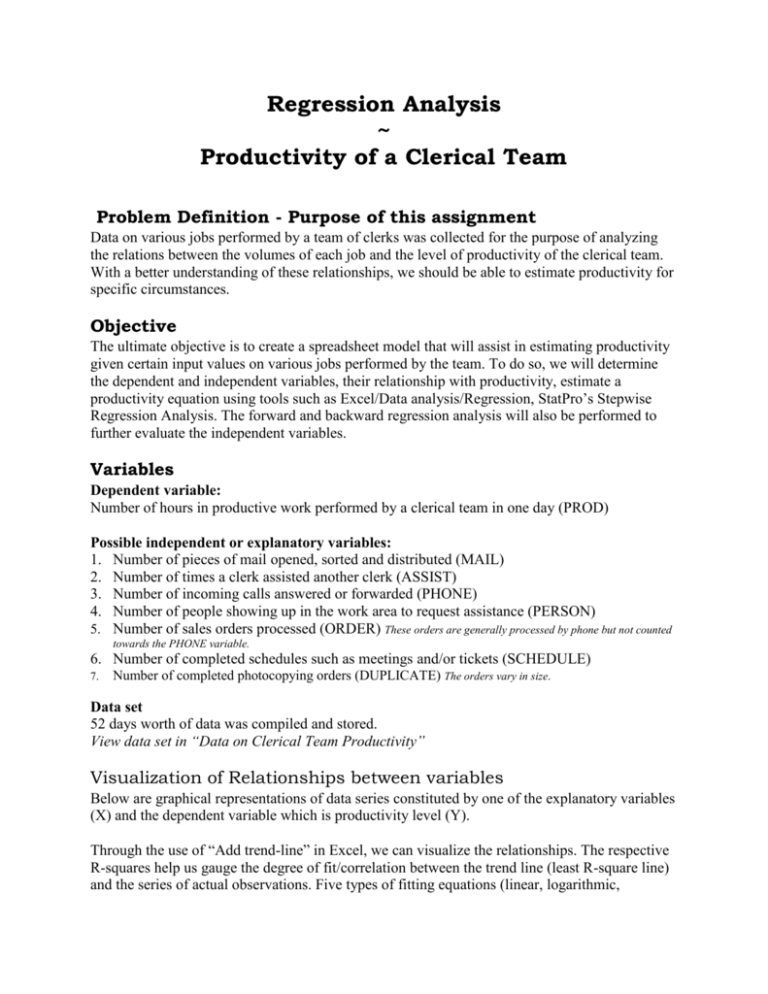

LOGARITHMIC REGRESSION EXCEL DOWNLOAD
You can download this Regression Analysis Excel Template here – Regression Analysis Excel Template #1 – Regression Tool Using Analysis ToolPak in Excelįor our example, we’ll try to fit regression for Weight values (which is a dependent variable) with the help of Height values (which is an independent variable).

But why should you go for it when excel does calculations for you?
LOGARITHMIC REGRESSION EXCEL MANUAL
There is actually one more method which is using manual formula’s to calculate linear regression. Regression tool through Analysis ToolPak.There are two basic ways to perform linear regression in excel using: These were some of the pre-requisites before you actually proceed towards regression analysis in excel. Negative Linear Relationship: When the independent variable increases, the dependent variable decreases.Positive Linear Relationship: When the independent variable increases, the dependent variable increases too.There are basically two types of linear relationships as well. Linear relationship means the change in an independent variable(s) causes a change in the dependent variable. This means these are the variables using which response variables can be predicted. Independent Variable (aka explanatory/predictor variable): Is/are the variable(s) on which response variable is depend.Dependent Variable (aka response/outcome variable): This is the variable of your interest and wanted to predict based on the Independent variable(s).Excel functions, formula, charts, formatting creating excel dashboard & others As you can see, there are a number of ways to use the LINEST function for nonlinear curve fitting in Excel.

Since the LINEST function returns b and log10(a), we’ll have to find a with the following formula: =LINEST(LOG10(yvalues),LOG10(xvalues),TRUE,FALSE) With the equation in this form, the LINEST function to return b and log 10 (a) can be set up like this: A power function has the form:Īgain, we can “linearize” it by taking the base 10 log of both sides of the equation to obtain: =EXP(number) Fitting a Power Function to DataĪ power function curve can be fit to data using LINEST in much the same way that we do it for an exponential function. Which, in an Excel spreadsheet, translates to: The second value returned by this array formula is ln(a), so to get just “a”, we would simply use the exponential function: =LINEST(ln(y_values),x_values,TRUE,FALSE) Now we can use LINEST to get ln(a) and b by entering ln(y) as the argument for the y_values: First, take the natural log of both sides of the equation to get the following: It’s a little trickier to get the parameter values a and b for this equation because first we need to do a little algebra to make the equation take on a “linear” form.


 0 kommentar(er)
0 kommentar(er)
